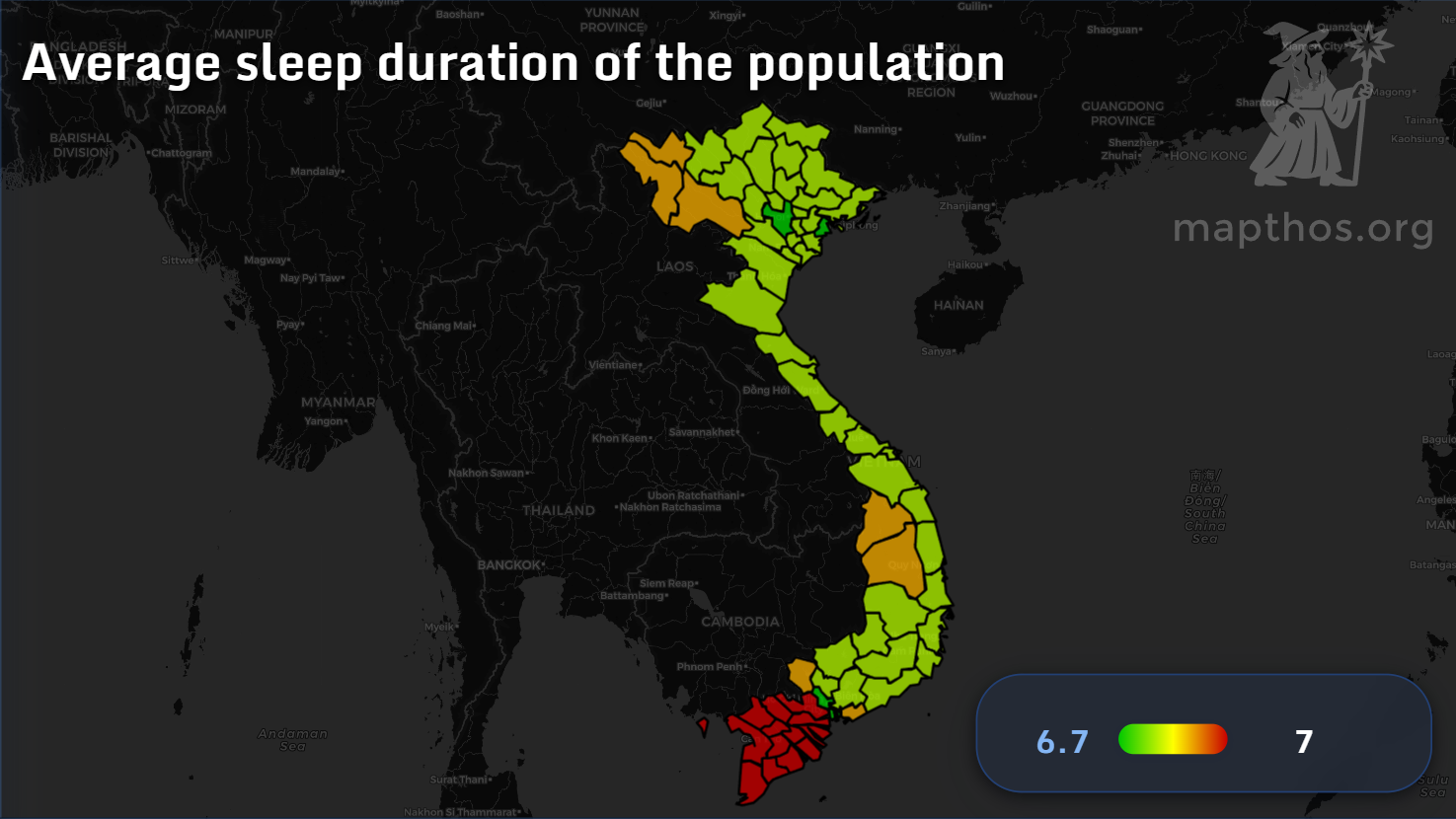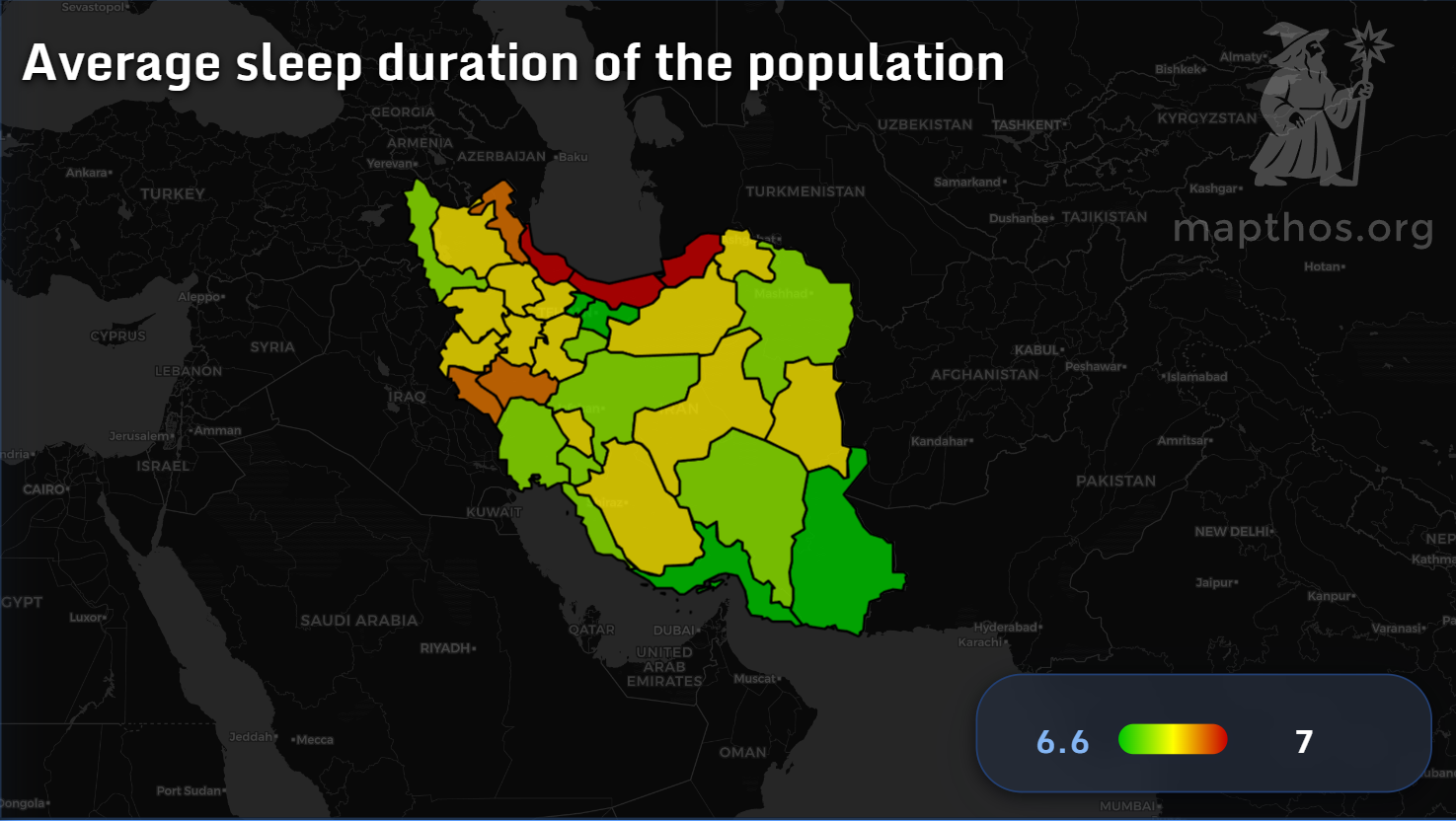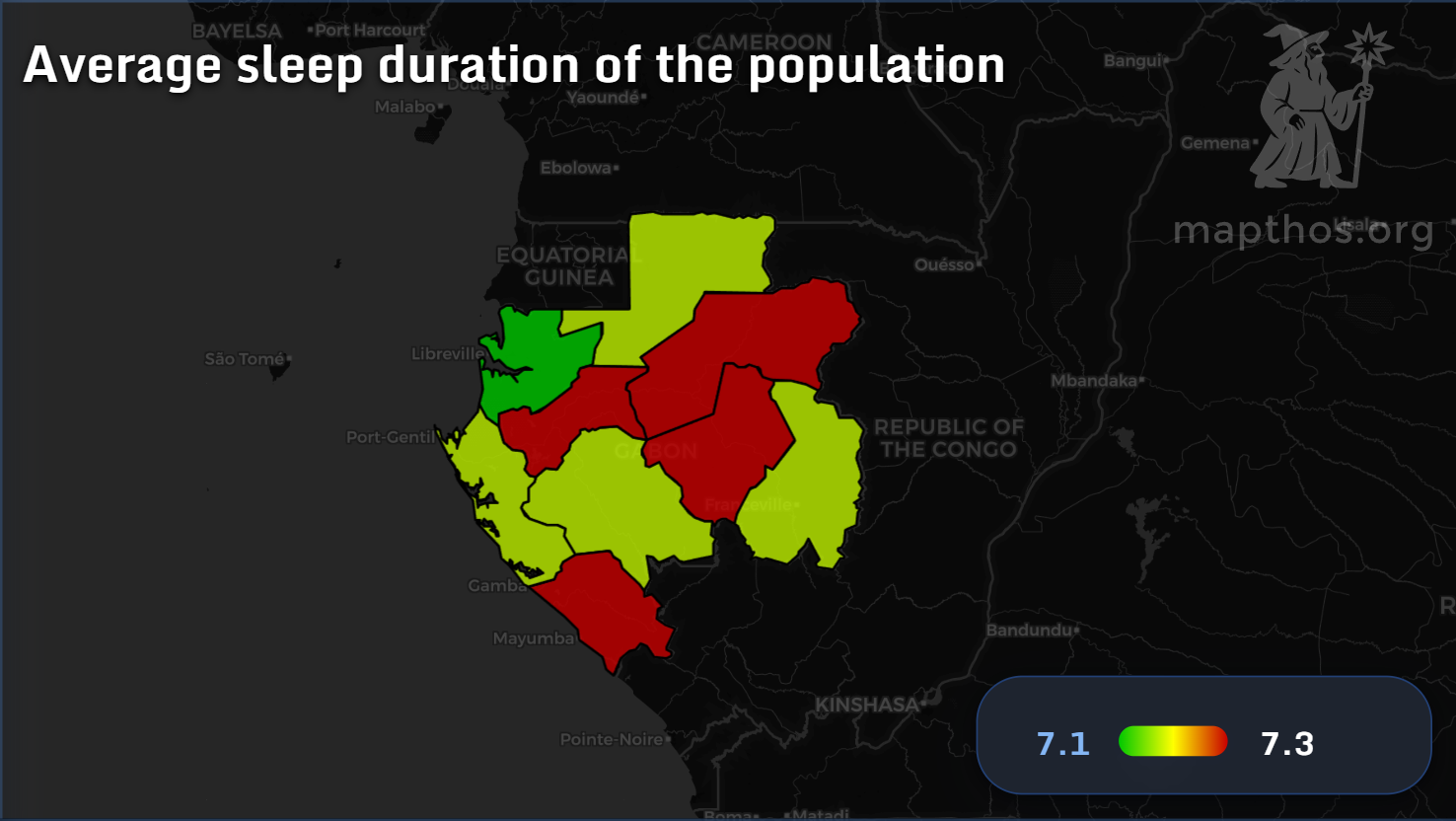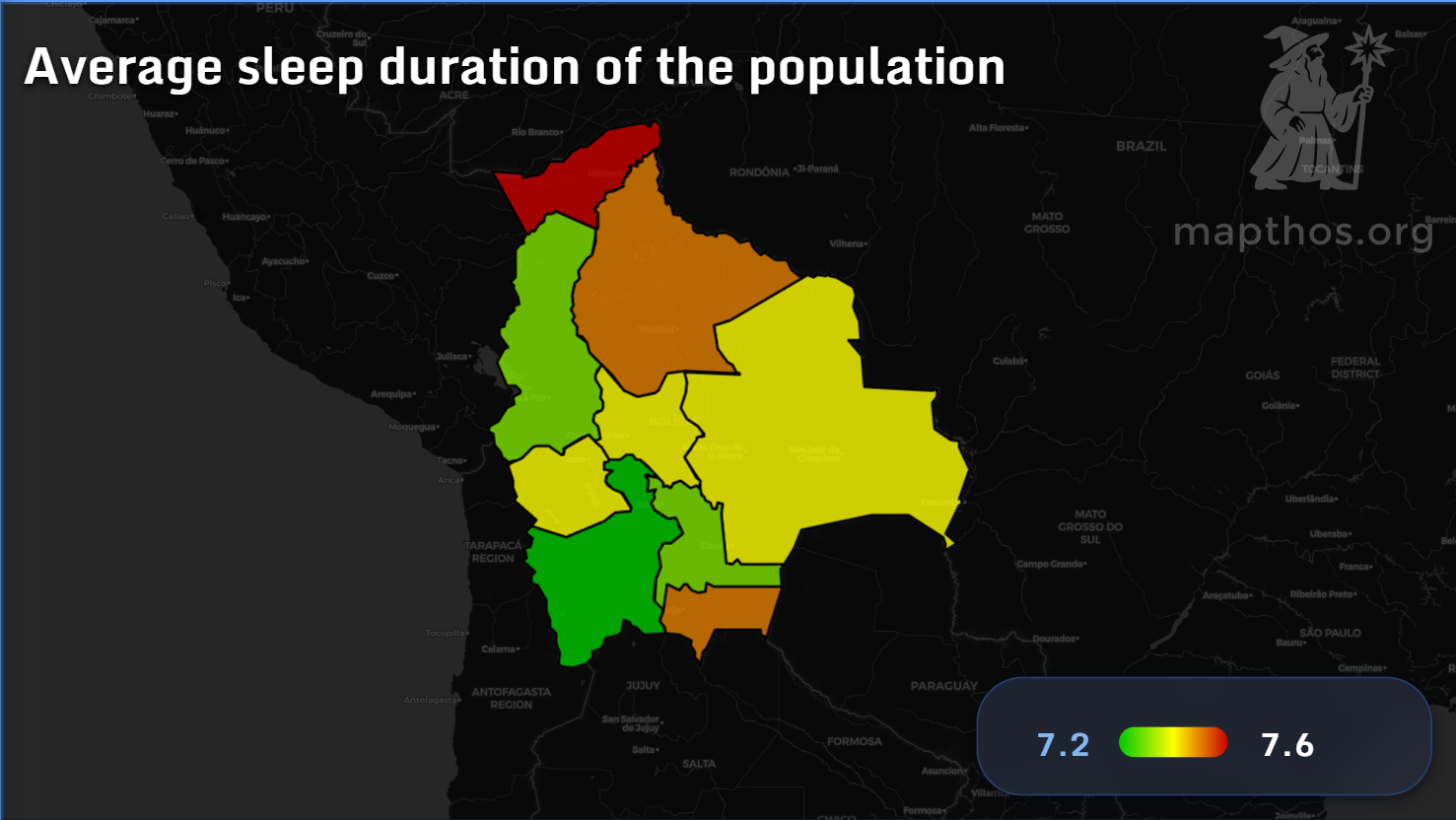How the World Sleeps in 2025 💤
Global Sleep Statistics and Data Visualization by MAPTHOS
Sleep — our most universal, yet deeply personal routine. Every culture, every city, every person has its own rhythm between dusk and dawn. But how much does the world really sleep in 2025?
Using MAPTHOS, the AI-powered data visualization platform, we mapped the average sleep duration of the global population — uncovering fascinating differences across continents. Some nations drift into deep rest; others stay awake chasing the sunrise.
🌍 The Global Sleep Map — Who Sleeps the Most?

The world’s average sleep duration in 2025 ranges between 6.5 and 7.5 hours per night. The color spectrum tells the story: 🟩 Green for restful nations, 🟨 yellow for moderate sleep, and 🟥 red for the restless.
- Northern Europe and Canada enjoy some of the healthiest sleep averages, above 7 hours.
- South America and the Middle East often fall below 7, affected by hotter climates and longer workdays.
- East Asia, especially Japan and South Korea, continues to rank among the most sleep-deprived developed regions — proving that economic growth often comes at the cost of rest.
🇨🇦 Canada — Where Nights Are Long and Peaceful

Canada’s sleep duration reflects its geography. Eastern provinces like Quebec and Newfoundland report 7.3–7.4 hours, while northern territories average closer to 7.1.
Long winter nights, clean air, and slower evening routines contribute to this healthy rhythm. Canada remains one of the most well-rested nations in North America.
🇻🇳 Vietnam — The Country That Wakes Early

Vietnam’s map shows a north-south sleep divide. Northern provinces — including Hanoi and Bac Ninh — average just under 7 hours, while the bustling southern cities like Ho Chi Minh City average 6.7.
Urban pace, nightlife, and tropical heat all play a role in cutting sleep short. Vietnam illustrates how modernization reshapes natural rest cycles.
🇮🇷 Iran — A Patchwork of Night and Day

Iran’s diverse geography brings diverse sleep. Coastal Caspian regions average 6.6 hours, while the southern and eastern provinces reach 7. Cultural habits — evening tea, family gatherings, and late-night conversations — make Iran’s sleep patterns uniquely social.
🇩🇪 Germany — Efficient Days, Balanced Nights

Germany’s average sleep duration hovers between 7.0 and 7.2 hours. Southern states like Bavaria rest slightly longer, while northern industrial hubs (e.g. Hamburg and Bremen) report less rest.
Despite the differences, Germany stands out for its stable national average, reflecting a well-balanced lifestyle and strong public health awareness.
🇬🇦 Gabon — Gentle Nights on the Equator

In Gabon, coastal provinces sleep longer — around 7.3 hours — while the inland regions average 7.1. Access to electricity, work schedules, and temperature variation shape these patterns. This small African nation reminds us how local conditions quietly sculpt global sleep data.
🇧🇴 Bolivia — Among the World’s Best Sleepers

Bolivia consistently ranks among the world’s best-rested countries, averaging 7.4–7.6 hours. Cool mountain climates, slower urban tempo, and traditional daily rhythms support healthy sleep habits. In contrast to its southern neighbor Argentina — one of the shortest-sleeping nations — Bolivia seems to embrace rest as a way of life.
🌙 What Sleep Data Reveals About Humanity
Behind the numbers lies a human truth: Sleep reflects who we are — our routines, our stresses, our dreams.
- In wealthier cities, digital screens and long commutes shorten nights.
- In rural areas, nature still dictates rest.
- Across all continents, better sleep correlates with mental health, productivity, and life satisfaction.
🌐 Visualize Your Own Data with MAPTHOS
All these maps were created using MAPTHOS, the AI-powered platform for making interactive world data maps.
With MAPTHOS, you can:
- Visualize any dataset geographically
- Compare health, environment, or economic trends
- Create interactive maps for journalism, education, or research
- Export beautiful visual stories in seconds
